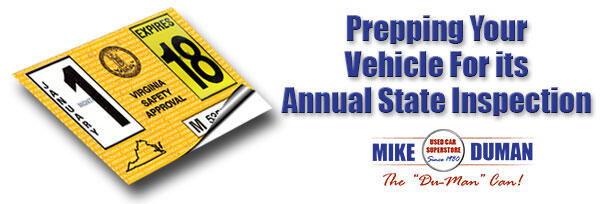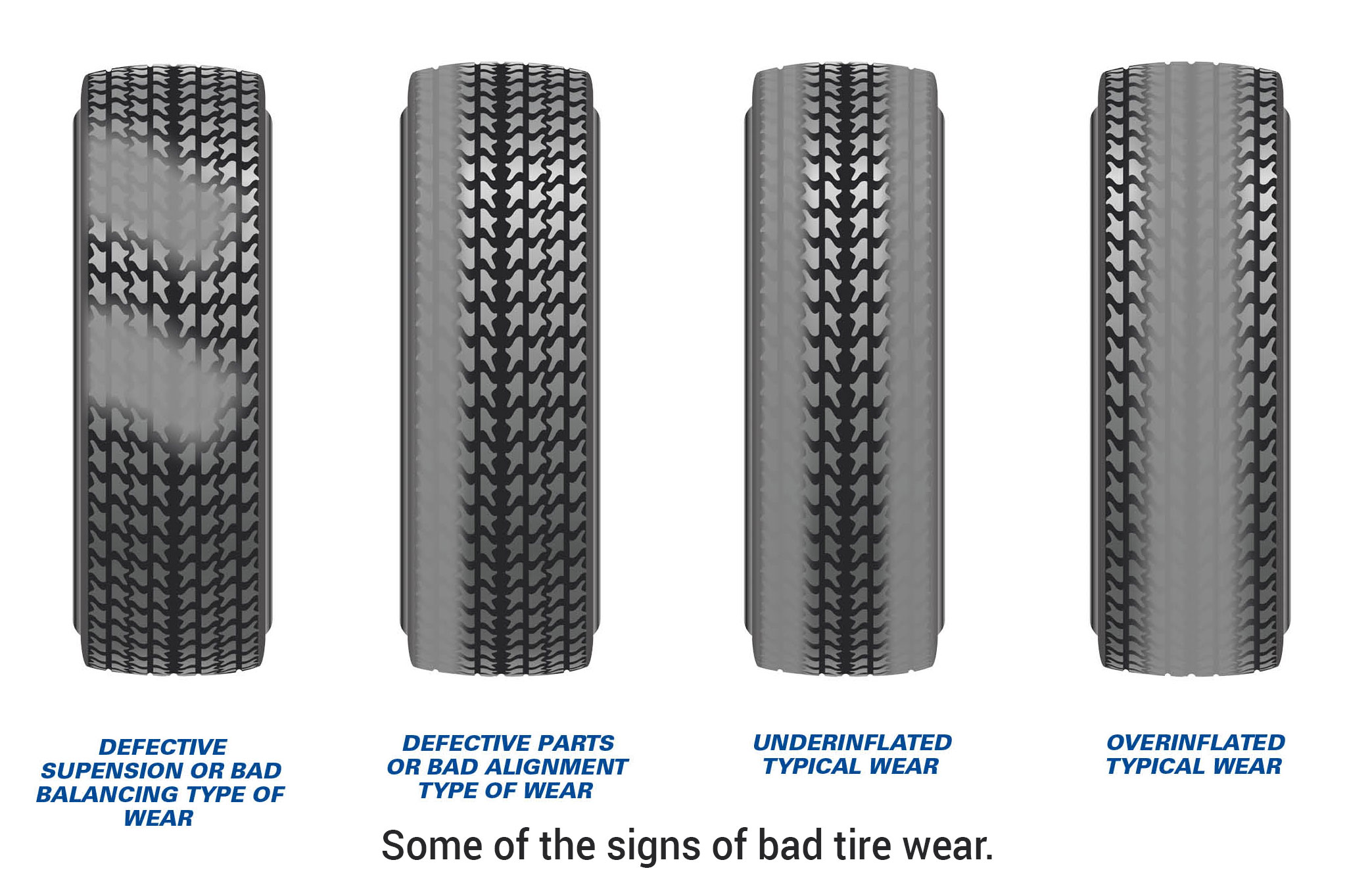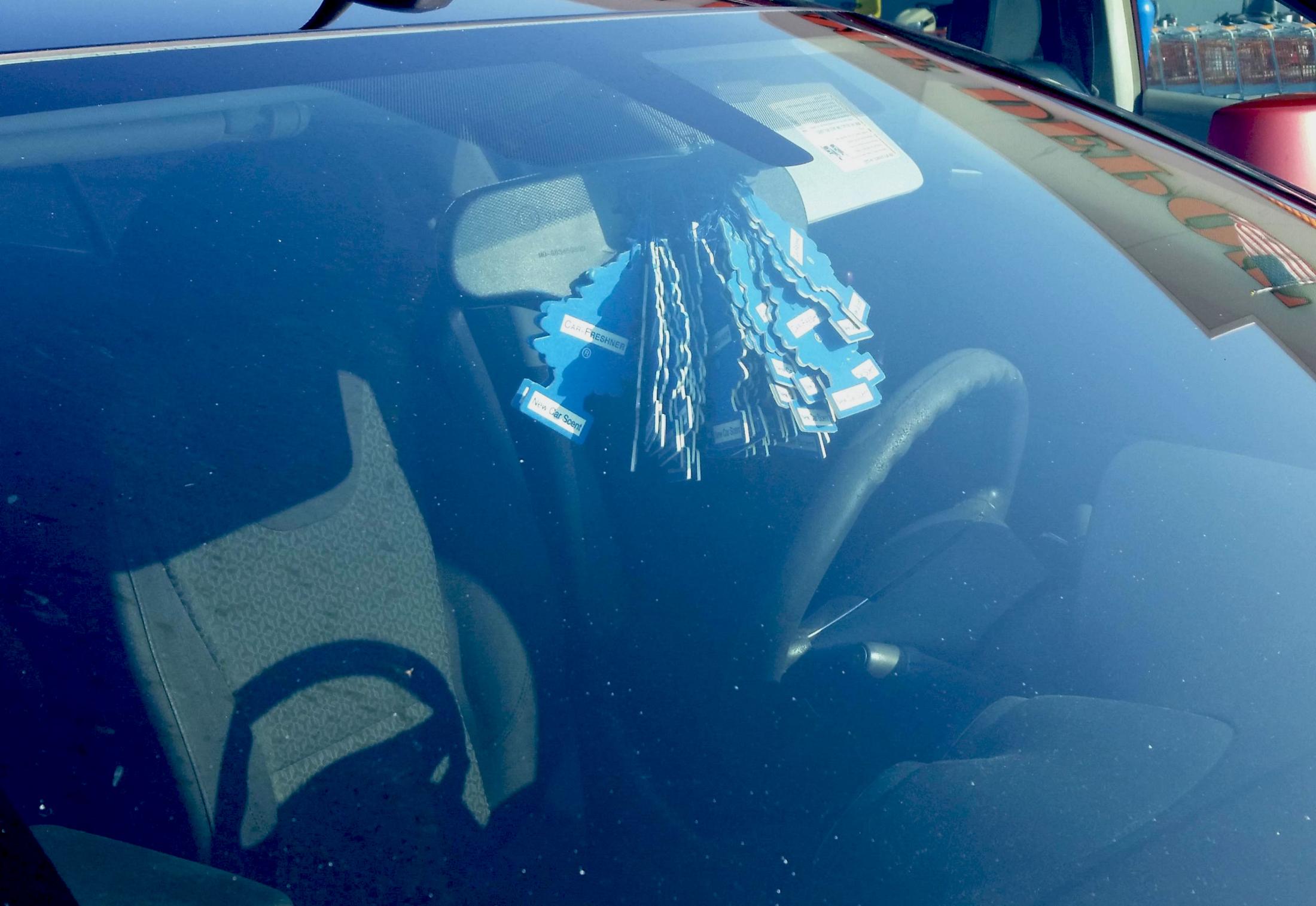
Since 1932, the State of Virginia has required vehicle owners to have their cars and trucks checked for mechanical safety and reliability by a State certified facility & mechanic once every 6 months. Yes, twice a year. The state actually required a bi-annual vehicle inspection up until the early 1980's when it was finally changed to the once annual inspection we have today. Some parts of the State require* an "Emissions Inspection" in addition to the Vehicle Safety Inspection, but that is currently not a State requirement for vehicles registered in the Hampton Roads area.
Pre-Inspection Check
Even if you're not the mechanically inclined type, there are still some things you should do to make sure your vehicle is ready for its annual State Inspection.
Lights: Make sure all of your running lights, head lights, brake lights and turn signals are working. Replace any faulty bulbs where necessary and don't forget to check the rear license plate lights!
Light Lenses: Visually inspect your headlights for lens cracks, missing chips or fogging. Excessive cloudiness (fogging) of your headlight lenses will cause your vehicle to fail the state inspection as it makes for unsafe operation on the road, especially in times of inclement weather. In other words, vehicles coming your way or crossing your path might have a hard time seeing you because of your foggy lenses. Don't ignore them!
Your local auto parts stores sell "lens cleaning and polishing" kits. These will come with detailed instructions and are relatively easy to use. You can also find lots of how-tos on internet video sites like YouTube that can help build your DIY confidence. If you are unable or uninclined to do the work, then many local garages also offer this type of service. Your only other option is to replace them and depending on the make and model of your vehicle, that can be an expensive route to take.
Badly cracked or chipped lenses (bright light showing through) will most likely need to be replaced. New replacements for your vehicle can be ordered from you local auto parts store or easily located online, and you can often find "used" ones at the local salvage yards.
Badly aimed headlights can also cause your vehicle to fail a state inspection. If approaching cars are flashing their brights off and on at you as get close and your brights are not on, then it might be time to have your headlights adjusted.
Glass: Visually check all of your vehicle's windows for cracks and large chips. This is particularly important for the front windshield, and it often bears the brunt of flying road debris. Rule of thumb is that a chip smaller than a quarter is nothing to worry about. That is unless the damage goes all the way through the windshield. Chips can also spread, so if you have a chipped windshield, it is best to have the chip repaired by an automotive glass repair company. Heck! Some of them will even come to you! If the chips are too large, then replacement is your only option.
Some windshield cracks can pass a state inspection if they do not run directly across your field of view. If you have a cracked windshield, it is best if you stop by a garage or shop that offers inspections and ask their Inspector if your windshield will pass.
If your vehicle is equipped with electric windows, they must be fully operational. If they aren't then repairs are going to be necessary.
Mirrors: Examine your exterior and rear view mirrors. If they are loose, see if you can tighten them. If any are cloudy or delaminating, then they will likely need to be replaced. Outside mirrors should also be free of cracks and chips. Repair or replace as necessary.
Wiper Blades: Examine your front and (if equipped) rear wiper blades. Look for signs of peeling, chipping or dry rot. Replace them as necessary. If they appear in good condition, but leave streaks in wet weather, replace them. A good rule of thumb is to replace them annually.
Tires: Visually inspect your tires for proper inflation and excessive or uneven tread wear. The internet abounds with information that can help you determine if the wear you see is normal or an indicator of bigger problems.

Other Exterior Issues: While lights, glass, mirrors, and tires are the main things the inspector examines during the exterior check, they will also be looking at the overall road-worthy condition of your vehicle. Make sure your ABS bumper cover isn't duct taped in place, or that bungee cords are the only things keeping your hood or trunk lids down.
Are there signs of fluid drips under your vehicle where you habitually park? We're not talking about the a/c condensation drips, we're talking about the kind of fluid drips that leave stains on the asphalt or concrete of your driveway. These are indicative of a situation that needs looking into. Especially if you are not sure what type (motor oil, antifreeze, power steering or brake fluid) of stains they actually are.
Brakes: Vehicle brakes wear at different intervals depending on the driver, vehicle use, parts used, etc. Consult your vehicle's owner's manual for manufacturer recommended intervals for servicing your vehicles brakes pads or shoes. If you sense there is a problem because of squealing, grinding sounds or the pedal travels excessively or feels spongy, then have them serviced as soon as you can. Waiting for "inspection day" will only result in delays or your vehicle being stuck with a rejection sticker.
Emergency Brake: Make sure it operates as intended. The inspector will check it out for sure.
Suspension: If you know how to safely jack up your vehicle and check the suspension linkage and parts for excessive wear, then, by all means, do so. Address any problems before you take it in for a state inspection. If jacking up your vehicle and moving around some likely dirty parts isn't your thing, then think about how your automobile handles. Do you turn the steering wheel and the vehicle takes an instant or two before it catches up? Is there excessive wiggle or play in the steering wheel? Are your tires wearing unevenly or do they shake at higher speeds? Does the vehicle pull excessively in one direction? If you answered yes or "sort of" to any of these questions, then it is probably time to take it in for a suspension check up.
Shock/Strut Test: Ok, this is an easy one. Bounce your vehicle up and down by hand. Good shocks and struts will rise and fall once. Worn out shocks and struts will allow the auto to bounce up and down a few times before stopping.
Interior: The state inspector will have to get in your vehicle to remove the old sticker. This is typically where their inspection starts. They will check the steering column and driver's seat for looseness, turn the lights off and on and check the signals and brake lights. They will check wiper operation and visually inspect your mirrors. They will check the window operation, the defroster fan/blower operation and blow the horn.
 If you want to make a good impression and show that you are a responsible car owner when you take your vehicle in for inspection, remove all of the trash beforehand. Clean the windows and if it smells like a wet dog has been living in there, defunkify it with deodorizer. Remember you only need one of those "pine trees" to do the job. Don't be "that car' and have an entire forest in there!
If you want to make a good impression and show that you are a responsible car owner when you take your vehicle in for inspection, remove all of the trash beforehand. Clean the windows and if it smells like a wet dog has been living in there, defunkify it with deodorizer. Remember you only need one of those "pine trees" to do the job. Don't be "that car' and have an entire forest in there!
Finally.... don't have anything hanging from your rearview mirror. (Especially those darn pine trees!) it is illegal to hang anything from your rear view mirror in the State of Virginia, and while it might not be a reason to reject your car, it is enough reason enough for a policeman to pull over for a talk if they're so inclined.
* Your vehicle must meet Virginia's emissions inspection requirements if it is garaged in one of the localities listed below
- Counties of Arlington, Fairfax, Loudoun, Prince William, or Stafford
- Cities of Alexandria, Fairfax, Falls Church, Manassas or Manassas Park
- https://www.dmv.virginia.gov/vehicles/#emissions.asp for more info.
Sources:
Tire wear Guide
tireguides.com/TireTips/TireDocument/10
Virginia State Police Vehicle Safety Inspection
www.vsp.state.va.us/Safety.shtm
